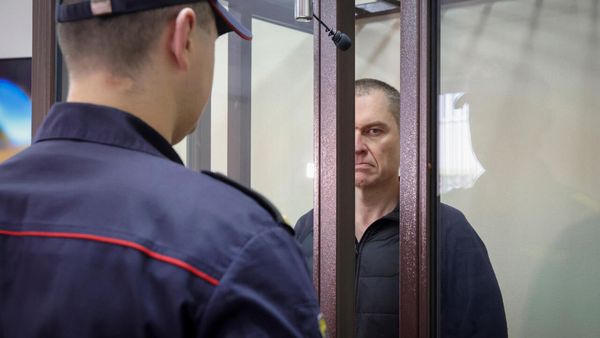
One Sunday morning in 1956, Mitch Silverstein of Specialloy called Hank Rowan at Inductotherm. He was desperate. A fire had destroyed the control panel on his furnace system and Silverstein had heard it could take six weeks to get a new panel from Ajax Electrothermic, the original supplier. Without it, Specialloy would go out of business.
After a brief hesitation, Rowan told Silverstein: “Plan to melt again on Friday.”
Only after he had hung up the phone did he question what he had said: How was he going to convince his team that they could build a 175-kilowatt control cubicle in less than a quarter of the time it typically took?
This is the moment — when the pressure is on — that highlights the difference between great and mediocre leaders.
Mediocre leaders feel the pressure and focus inward, on the voice of their own ego and fears of failure. In their insecurity, they take a forceful approach, trying to intimidate and convince people into motivation.
Great leaders feel the pressure too, but they’re able to check their own ego and fears — they know it’s not about them.
Here’s what they do:
1. They frame the situation as a challenge, not a threat. If your team is already running full out, how do you motivate them to give even more? Simply putting more pressure on them will only send them into survival mode.
But, in fact, because our frugal brains are always conserving energy for a potential survival emergency, we often do have energy in reserve.
Savvy leaders know how to inspire their team to tap into that reserve. They reframe the situation to appeal to their desire for greatness, getting people excited instead of panicked: Instead of saying “we can’t afford to fail” or “we better get this,” they say things like: “We’re up to this” or “Wouldn’t it be cool if we pull this off?”
Rowan and his team worked day and night that week to finish the project on time, and Specialloy was indeed melting by Friday. Afterwards, he made sure to remind workers they could achieve greatness: “Do you see what you’ve accomplished? It proves one thing: we never know what we’re capable of doing until we do it.”
You can generate in your team that desire to access their true potential. StarOfService, a platform for hiring service professionals in 80 countries, has been growing fast over the past five years. At the end of 2018, when co-founder Lucas Lambertini and his management team announced to their 90 employees the ambitious goal of achieving profitability by end of Q1 in 2019, they said: “You are part of a company that can be profitable. We need your help to accomplish that.”
2. They create psychological safety for their team. In survival mode, our self-esteem becomes more dependent on whether we succeed or fail. So we waste internal energy rationalizing our mistakes and justifying why we haven’t yet succeeded. How do you divert this unproductive mental energy into a solutions focus?
“You have to position success differently when you’re working on intractable problems,” says Karthik Sridharan, CEO cofounder of Kinnek, a marketplace for SMEs. For example, when his development team was grappling with the challenge of getting small businesses to stay on the site for hours instead of minutes, he made his expectations explicit and clear: “When I check in with you, I’m not necessarily looking for the final solution. What I want to know is what’s not working, what have you learned, what’s the next step.” Now when a developer sees Sridharan walking toward his desk, he doesn’t have to panic or feel insecure.
At StarOfService, Lambertini says they’ve created a sense of “We’re there for you.” Multidisciplinary squads take on the name of a famous battle from World War II (e.g. Operation Overlord), and when any of their members are discouraged, the team will rally around to ensure that no-one is left behind.
3. They help people focus on what’s important. In survival mode, our focus becomes overly narrow: We react to urgency instead of responding strategically. How can you help them filter through the emotion and complexity of competing priorities?
“I’m a huge believer in clarity,” says entrepreneur-turned-VC Ben Horowitz. “As long as people are clear on what they need to do and what’s going on, you’re very likely to succeed. When nobody is clear, then you’re guaranteed to fail.”
Toby Thompkins, CEO founder of SAFIOO, a crowdsourced leadership platform, recalls when he came on as Executive Director of an important community foundation, one that had a 50-year legacy of supporting African American grassroot non-profits. On day three in the role, the staff told him they only had enough money to keep the doors open for another 60 days.
Now what, Thompkins wondered: “How do I get everyone to come together as a team to make the most of the next 60 days so that the legacy of the organization is preserved and our outstanding obligations are met even as we’re figuring out our respective futures?”
“So I told the team, ‘We have 60 days to create new lives for ourselves.’ I hosted resume prep sessions, wrote letters of recommendations, shared contacts in my rolodex, and put on my coaching hat. As a result, almost everyone on my 10 person team found a new job within 60 days. One person decided that it was time for her to finally apply to medical school, and another joined me at a larger philanthropic institution.”
4. They create a sense of momentum. As Harvard professor Teresa Amabile showed in her research, we feel most motivated when we’re making progress. How do you do that in a world where progress often isn’t linear?
With micro-goals and shorter feedback loops.
Sridharan found the tighter the deadline, the more they had to communicate. This meant they might add a second stand-up meeting at the end of the day, to make sure everyone knew what the others were working on and they weren’t inadvertently holding up each other’s progress. Now if someone was waiting on someone for a key deliverable, they found out within hours.
At StarOfService, squads engaged in turbocharged sprints that they called “war week,” giving daily status updates to the whole company. And it wasn’t just about celebrating wins. They shared lowlights as well: if they had found 10 new bugs, it wasn’t a failure — they simply reported how they were going to address the challenge. Through this well orchestrated execution, StarOfService quadrupled the number of professionals using the platform and achieved profitability by the end of January 2019, 60 days ahead of schedule.
Here’s the thing: Emotions are contagious. Get your team working in a place of focused, inspired confidence and, together, you can accomplish the unimaginable.







